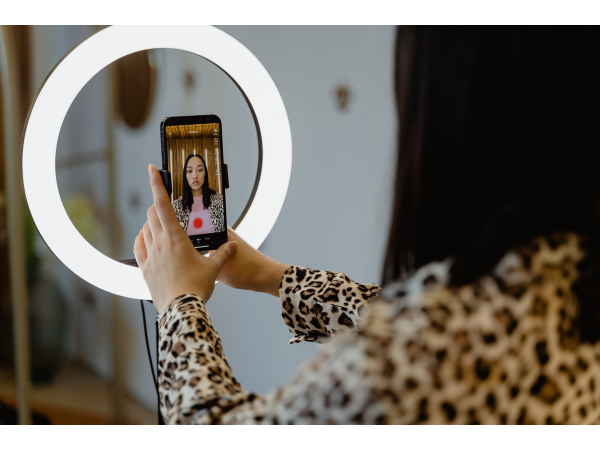The TikTok Ban: Adapting Your Digital Advertising

Previously, we covered social media strategy as it relates to digital marketing, which you can read here. The biggest takeaway was the importance of adapting to the evolving trends and user behaviors. But how do you navigate major changes to the platforms we place content on?
Earlier in 2024, congress voted on a proposal to ban TikTok. Hosting millions of active users, TikTok is one of the most significant channels for digital advertising. How will a potential TikTok ban impact your digital advertising strategy, and what should you do to adapt?
First, an outline of the specific details of this ban. We'll clear up misconceptions and assumptions regarding the if, what and when this is happening.
Secondly, we will discuss the impact this potential ban will have on other social media platforms. Predicting how we foresee users and companies responding to TikTok's ban by reviewing similar situations.
Finally, we will provide direction on your social media marketing strategy as you adapt to the shifting social media landscape.

An Overview on the Ban
As news spread about a “TikTok ban,” you might have thought the proposal directly and immediately outlawed the app. The reality of this ban, however, is slightly more complicated.
What is happening?
Earlier this year, Congress approved a proposal that required the company ByteDance to sell TikTok within nine months. If the China-based company failed to meet this condition, the app would be banned from the USA. Also, if ByteDance is actively in the process of selling after the deadline, they will have an extra three months.
This means that, technically, TikTok could remain available in the states if ByteDance sells the social media platform. However, the company has already stated that they have no intentions to do so.
When is it happening?
After the congressional approval of the TikTok ban, many started counting down the days until that nine month deadline. The likelihood that TikTok will disappear from our phones when that day comes, though, is slim.
Considering ByteDance's refusal to sell the platform, the only obstacle that could delay the ban is a court challenge. Anticipating this, the US appeals court has set to hold arguments challenging the ban on September 16th. The court will make a ruling on these challenges by December 6th, preventing delays.
In May, ByteDance filed a suit in an attempt to block the ban. That same month, a group of content creators on TikTok did the same. They argued that TikTok has "a profound effect on American life." A third group made a legal challenge to the ban on June 6th.
We cannot predict whether or not these court challenges will be successful. Instead, it's important for you to prepare for the impact this will have on your social media management. Other platforms have already shifted their strategy in advance to the news.

The Impact on Social Media
Other platforms are adapting and responding to the news just like us. Instagram has shifted its type of content in an attempt to be the substitute for users. By hosting similar content to TikTok, Instagram is setting "Reels" up as a clear alternative for creators and advertisers. They began influencer outreach, encouraging influencers to have a presence on their platform leveraging existing content.
When Twitter was purchased by Elon Musk (and rebranded to X), a similar shift occurred. Unsatisfied with many of the changes, users heavily considered leaving the platform. Meta, owner of Facebook and Instagram, responded to the changing tides by introducing Threads. This Instagram-based platform functions similarly to the former Twitter.
Though Threads saw one of the fastest growth in users, the number of active users dropped just as fast. Make no mistake: Threads is still an active platform, but it has not overtaken X. This shows that migrating users from one platform to another is improbable while the original platform is still running. Although many users are dissatisfied with the changes to X, they remain loyally active on the platform.
One instance in which significant user migration occurred ahead of a platform's discontinuation was Vine. Ironically, many view TikTok as a successor to Vine, as they host similar content. In the case of Vine, other platforms introduced similar, short-form video content that enticed users. The key difference, however, was that those platforms improved upon the features to make a stronger user experience.
Over the past few years, TikTok has attempted to remain relevant and avoid a similar fate to Vine. The app is constantly updating to evolve with ongoing trends and user behaviors. Many of these updates, however, have watered down their brand.
TikTok responded to the desire for longer content by expanding time limits. Although this prevents other platforms from uniquely providing that style of content, TikTok's original brand centered around brief videos. Many users joined TikTok because they enjoyed seeing specifically short, streamlined content. Now, that desired content is mixed in with videos approaching thirty minutes in length.
While TikTok has attempted to update its platform to remain relevant, they've fallen behind in a key area: AI. Meta AI has drastically shaped Instagram and Facebook as they evolve. In fact, you see AI integration into most social media tools as a prominent feature.
TikTok relies heavily on AI for its algorithm, but lacks features that give users function of AI tools. This puts ByteDance behind the likes of Meta and Google Gemini.
The question remains, then: Why has TikTok maintained its massive user base? The aforementioned TikTok algorithm is vastly ahead of any algorithmic technology of its competitors. TikTok has designed its algorithm to keep users on the platform for as long as possible. Their control over what is trending and among what types of users is highly advanced.
So, even though Instagram has introduced similar features to TikTok, they're unlikely to bring a majority of users over. As long as TikTok remains available, users are going to stay on the platform for the preferred algorithm. A significant migration of users is only likely once TikTok is entirely unavailable.
Even if ByteDance decided to sell the TikTok platform, they would never sell the algorithm TikTok utilizes. In that case, the platform would almost certainly lose its base of active users.

How to Navigate the Ban
The likelihood of TikTok's ban poses many questions for creators and advertisers. Is it worth continuing content creation and advertising on TikTok until then? The answer, we feel, is Yes!
TikTok still hosts a massive base of active users that it will likely maintain until it becomes unavailable. This means that prematurely moving your social media content away from TikTok is a flawed strategy.
Additionally, TikTok’s UGC and algorithm remain strong for advertising and boosting brand awareness. Creating content for TikTok is easier because the platform values informal content that is lower budget.
Nonetheless, you shouldn’t act as though it’s business as usual. Eventually, TikTok won’t be a digital channel for your business, so you should alter your content strategy accordingly. If TikTok is your only social media channel, you will lose that content and audience.
Create a safety net by cross-promoting content amongst platforms. Make sure your target audience is following all of your social media pages. This way, you can smoothly transition your content and drive traffic to those platforms.
Using Facebook, Instagram, and TikTok simultaneously strengthens your social strategy by increasing your online presence. Your brand will be more likely to make an impression if your audience can engage with content across platforms.
Review your social media metrics: Do you have a considerably larger audience on one platform than the other? If so, set goals to bring traffic over from one channel to another. A digital Agency, like Media Rebel, can help you achieve your social media goals through strategy, execution, and monitoring.
In the case that TikTok becomes unavailable, a cross-platform strategy will ensure that your coverage will remain online. Other businesses who haven’t connected their social media strategy across platforms will lose vital progress adapting.

Conclusion
We can speculate on the future of social media using the evidence at our disposal, but nothing is certain. User behavior tends to follow patterns, but these can be unreliable.
Chances are high that many users will move their content from TikTok to Youtube and Instagram. That aligns with what we can already observe about those platforms' functions and user base. The possibility of another platform arising, just as TikTok had done for the former Vine, is real.
Regardless, it is wise to expand your social media strategy and stay informed on the upcoming changes. By directing and encouraging your audience to your content across platforms, you can adapt easily to significant changes.
Ultimately, a digital advertising agency can be a vital resource in navigating social media. Adapting to changes and trends is a time-consuming job. By hiring an agency, you are relieving yourself of this burden, ensuring that your social media strategy is optimal. For more information on the work digital advertising agency's do, click here.
